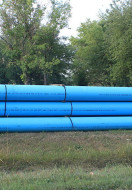In many regions, electric utilities offer special rates for electricity used at periods during the day when demand is lower on the utility’s system. These periods are called “off-peak” periods and vary from utility to utility. The special rates are called “time-of-use” rates. Off-peak controls can be installed on electric water heaters to take advantage of these lower time-of-use rates.Off-peak controls regulate the water heater so that water is heated during off-peak periods, such as in the early morning hours before the heavy morning use period, when electricity is relatively inexpensive. During peak periods, the water heater is shut off. The main benefit of off-peak controls is cost savings because they enable a PHA to take advantage of lower rates. In addition, energy is saved because hot water temperatures are not maintained at 120 degrees the entire day.
To determine if off-peak controls are an option, contact the local utility to find out if time of use rates are available, and if so, what the rate schedules are. Off peak controls should only be installed if hot water needs can still be met. Hot water needs generally are greatest in the morning and early evening hours. Before off-peak controls are installed, the PHA should verify with the utility that adequate hot water supplies will be available during these times. In addition, the utility must install special time-of-use meters before the off-peak controls can be installed.
Applicability
- Single-family and multifamily buildings with electrically-heated domestic hot water
Considerations
- The local utility must install time-of-use meters before off-peak controls can be installed.
- The water heater must have well-insulated tanks, because water needs to remain hot for several hours after the water heater shuts off during peak periods.
- Before off-peak controls are installed, the PHA should verify with the utility that hot water supplies will be available during heavy use times, such as morning and early evening hours.
- Residents should be encouraged to use hot water wisely through energy education.
Performance/Economics
In large energy applications such as water heating in multifamily facilities, utility billing is based on the quantity of energy used at given points during the billing period, known as the monthly demand, and the total amount of energy used during the billing period. If the energy demand can be reduced through time-of-use controls, or shift to another period with timers and controls, energy costs can be lowered. The amount of savings is based upon utility demand costs, length of operating time, quantity of water to be heated, and water heater efficiency.
This article was brought to you cortesy of the:







